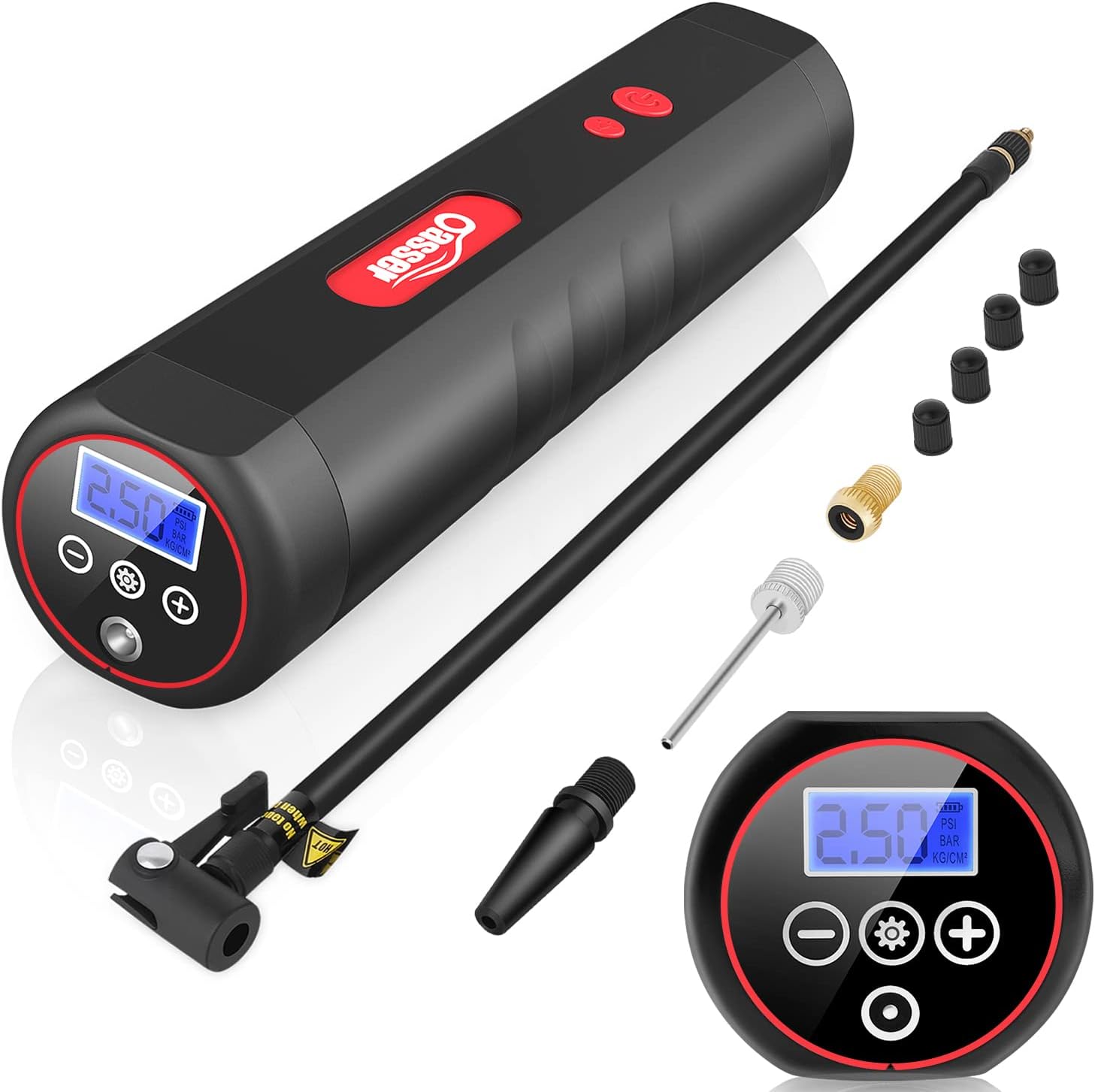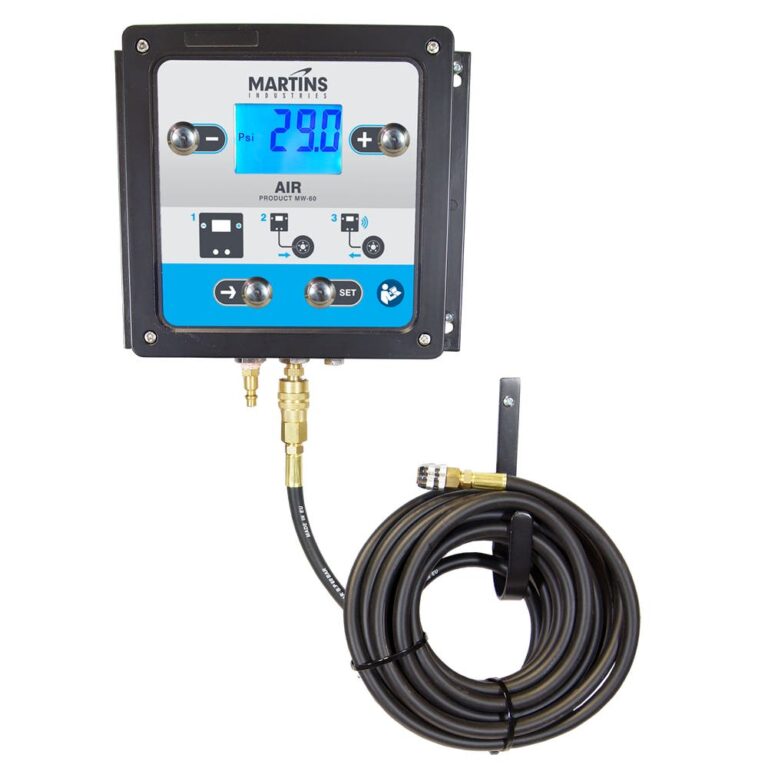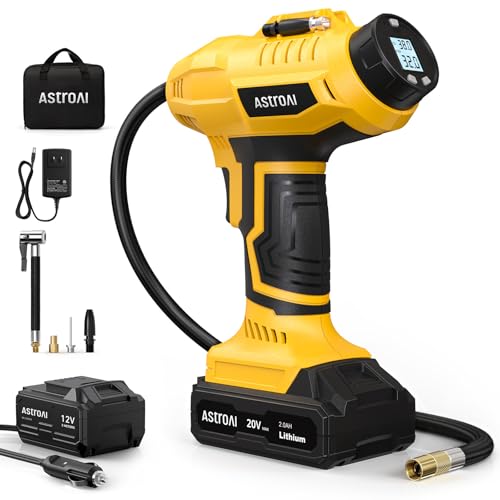How the Automatic Tire Inflator Keeps Your Tires Perfectly Pressurized
What Are Automatic Tire Inflators?
Automatic tire inflators are devices that are designed to automatically maintain the proper tire air pressure in a vehicle’s tires without requiring any effort from the driver. They work by connecting to the tire’s air valve stem and monitoring the air pressure levels in real-time using built-in sensors.
When the tire pressure drops below the desired threshold, the automatic inflator will turn on and add air to the tire until the proper pressure level is reached again. The inflator runs off the vehicle’s 12V power supply and can inflate a tire from 0 to 30 PSI in just a few minutes.
Unlike manual tire pressure gauges which require manually checking and filling the tires, automatic inflators do all the work automatically in the background while driving. They provide a convenient hands-free way to maintain safe and optimal tire pressure at all times for improved fuel efficiency, tire longevity and performance.
Most automatic inflators continuously monitor and adjust the pressure of all four tires on a vehicle simultaneously. They are easy to install with either temporary or permanent mounting and contain an integrated compressor and pressure sensor unit to handle all the inflation tasks.
Overall, automatic tire inflators are an essential device that takes the hassle out of one of the most important vehicle maintenance tasks – ensuring tires are properly inflated. Their automated functioning keeps tires inflated to the ideal pressure for a smoother, safer ride.
Benefits of Automatic Tire Inflators
Maintaining proper tire pressure provides several important benefits for your vehicle. Automatic tire inflators make it easy to keep your tires inflated to the vehicle manufacturer’s recommended pressure. Here are some of the key benefits of using an automatic tire inflator:
Maintain Proper Tire Pressure
Keeping your tires inflated to the proper pressure improves their ability to grip the road and handles loads as designed. Underinflated tires can lead to uneven tread wear, reduced handling, and tire damage from overheating. Automatic inflators eliminate the guesswork and make it easy to maintain optimal pressure.
Improved Fuel Economy
Underinflated tires create more rolling resistance, which reduces fuel economy. Studies show that you can improve gas mileage by 0.2% to 3% for every 1 psi of increased tire pressure. Using an automatic inflator helps maximize fuel efficiency.
Extended Tire Life
When tire pressure drops, it causes excessive wear on the outer shoulders of the tread. By maintaining consistent inflation, automatic inflators allow the entire tread surface to wear evenly. This prevents premature wear and extends the usable life of your tires.
Increased Safety
Proper inflation is crucial for safety, as underinflated tires can fail more easily. Tires that are underinflated by as little as 6 psi have been shown to increase braking distances. Keeping your tires inflated to the recommended pressure with an automatic inflator gives you better control and handling.
Types of Automatic Tire Inflators
Automatic tire inflators come in three main types – built-in, portable, and wireless. Each has its own advantages and best use cases.
Built-in Inflators
Built-in tire inflators are integrated into the vehicle, typically mounted in the trunk or cargo area. They connect directly to the vehicle’s 12-volt power outlet and air system to monitor and inflate tires automatically.
Key features of built-in inflators:
- Convenient automatic inflation without any external devices needed.
- Constant monitoring of tire pressure even while driving.
- Alert driver if a tire loses pressure.
- Can inflate multiple tires sequentially.
- Require professional installation but good for long term use.
Main benefits are automation, convenience, and continuous monitoring. Good for those wanting seamless inflation without dealing with portable devices.
Portable Inflators
Portable tire inflators are wireless, battery powered units that can be placed in the vehicle and activated as needed. They aren’t permanently installed and require manually attaching to each tire’s valve stem to inflate.
Key features of portable inflators:
- Completely wireless and cordless operation.
- Can be easily moved between vehicles.
- Inflate on demand instead of constant monitoring.
- No installation required.
- Typically have digital pressure gauges.
Main benefits are flexibility, cost savings, and ease of use. A good choice for those not needing continuous inflation.
Wireless Inflators
Wireless tire inflators have a compact onboard air compressor that connects to a wireless display unit. They monitor pressure and can inflate tires automatically when pressure drops.
Key features of wireless inflators:
- Automated inflation of tires without wires.
- Digital display provides pressure readout.
- Permanently install compressor but can remove display.
- Alerts driver if inflation needed.
- Can inflate multiple tires sequentially.
Combines automated inflation with cordless convenience. A middle-ground between built-in and portable inflators.
Key Features to Look for in an Automatic Tire Inflator
When shopping for an automatic tire inflator, there are several key features to consider that can impact performance and ease of use:
Auto Shut Off
One of the most important features for safety and convenience is an auto shut off. This will automatically stop the airflow when the target pressure is reached. Having this feature prevents overinflation and gives you peace of mind to walk away while it’s running. The best auto shut offs are accurate to within 1-2 PSI.
Pressure Gauge
A built-in pressure gauge takes the guesswork out of achieving the right PSI. Analog gauges are basic and get the job done, while digital gauges give a precise readout. Some inflators allow you to set the target pressure so it will automatically inflate to that level.
Cord Length
Look for units with a cord length of at least 8 feet to allow you to reach all four tires from one location. Longer cords of 10+ feet give you even more flexibility to reach multiple vehicles. Make sure the cord is durable and resistant to tangles.
Portability
For portable inflators, compact size and light weight are ideal. Look for units under 5 pounds with a design like a square box. They should have a handle or strap to make transportation easy. Units designed for your vehicle’s 12V outlet need to be lightweight enough to pack away when not in use.
The right combination of automatic shut off, pressure gauge, cord length, and portability makes for a convenient and user-friendly tire inflator. Keep these key features in mind while shopping to find the best model for your needs.
Installation Guide
Installing an automatic tire inflator is a straightforward process that most vehicle owners can complete themselves. The inflator unit mounts inside the vehicle’s trunk or cargo area and connects to the tire valve stems via air hoses.
Where to Install
When determining where to install your automatic tire inflator, consider these factors:
- Accessibility – The inflator needs to be mounted in a spot where you can conveniently access the control panel and clearly see the pressure readings. Avoid cramped areas.
- Hose Length – Measure the distance from your desired install location to the tire valves. The hoses must be able to comfortably reach all 4 tires. Extenders are available if needed.
- Power Source – If hardwiring the inflator, you’ll need access to a 12V DC power source, like directly from the vehicle battery or fuse box. For plug-in models, you’ll need a reachable 12V power outlet.
Hardwired or Plug-In
Automatic tire inflators come in hardwired or plug-in models:
- Hardwired – These permanently connect to your vehicle’s 12V power by splicing into wires or using add-a-circuit fuse taps. Hardwiring provides constant power.
- Plug-In – These use a 12V accessory outlet for power. The inflator only receives power when the outlet is live (engine on). Plug-ins avoid permanent vehicle modification.
Choose based on your comfort with electrical work and desire for a clean install. Hardwired is more involved but provides constant monitoring.
Necessary Tools
To install your automatic tire inflator, you’ll need:
- Screwdrivers
- Wrenches for mounting bracket
- Wire strippers (hardwired models)
- Crimp connectors (hardwired models)
- Voltage meter (hardwired models)
- Drill with bits (for mounting holes)
- Cable ties for securing hoses
The inflator usually includes all necessary mounting hardware. Carefully read the manufacturer instructions to ensure you have the right tools on hand. Proper installation ensures safe, reliable automatic pressure readings and inflation.
Maintenance Tips
Proper maintenance is key to keeping your automatic tire inflator running smoothly for years to come. Here are some tips to keep in mind:
Monitor Tires
- Check your tire pressure at least once a month to ensure the inflator is keeping them inflated to the proper PSI. Tires can naturally lose some air over time.
- Examine tires for any punctures, damage or excessive wear that could prevent the inflator from working properly. Address any issues immediately.
- Consider rotating your tires every 6,000-8,000 miles to promote even wear. This will help maintain tire health.
Check Air Filters
- Replace air filters on schedule per the manufacturer’s recommendations, usually every 1-2 years.
- Clogged air filters can reduce airflow and performance. Replacing them ensures optimal inflator operation.
Inspect Hoses
- Check all hoses connecting the inflator to your tires for cracks, leaks or damage.
- Firmly reconnect any loose hoses. Replace damaged hoses to maintain a tight seal.
- Keep hoses away from hot surfaces or moving parts that could cause wear over time.
Regular monitoring and maintenance will keep your automatic tire inflator running efficiently for many years and thousands of miles. Investing a small amount of time periodically goes a long way.
Top Automatic Tire Inflator Brands
There are several major brands known for manufacturing high-quality automatic tire inflators. Here are some of the top options:
Viair
Viair is one of the most trusted names in automatic tire inflators. Founded in 1998, the company focuses solely on designing and building air supply products for automotive and truck enthusiasts.
Some of their most popular portable inflator models include:
- Viair 85P – Compact and lightweight unit good for sedans, coupes, and motorcycles
- Viair 90P – Medium-duty model provides extra power for small SUVs, ATVs, etc.
- Viair 400P-RV – Heavy-duty inflator designed for RVs, trailers, and large trucks
Key benefits of Viair inflators are their durability, ability to reach high PSI levels, and long power cords. The units are also designed to shut off automatically when target pressure is reached.

Slime
Slime is another go-to brand for automatic tire inflators. In addition to inflators, the company offers a wide range of tire care products like sealants and repair kits.

Their inflator lineup includes:
- Slime 40026 2X Heavy Duty Direct Drive – Best for trucks, tractors, RVs
- Slime 40022 12-Volt Digital Inflator – Good all-purpose midsize inflator
- Slime 20088 4-Way Valve Tire Inflator – For inflating car, bike, and sports balls
Key features of Slime inflators are the easy-to-read digital displays and built-in LED work lights on some models. They deliver ample airflow and use heavy-duty direct drive motors.
Oasser
Oasser specializes in portable air compressors and tire inflators. Their inflators provide extremely fast inflation thanks to powerful direct drive motors.
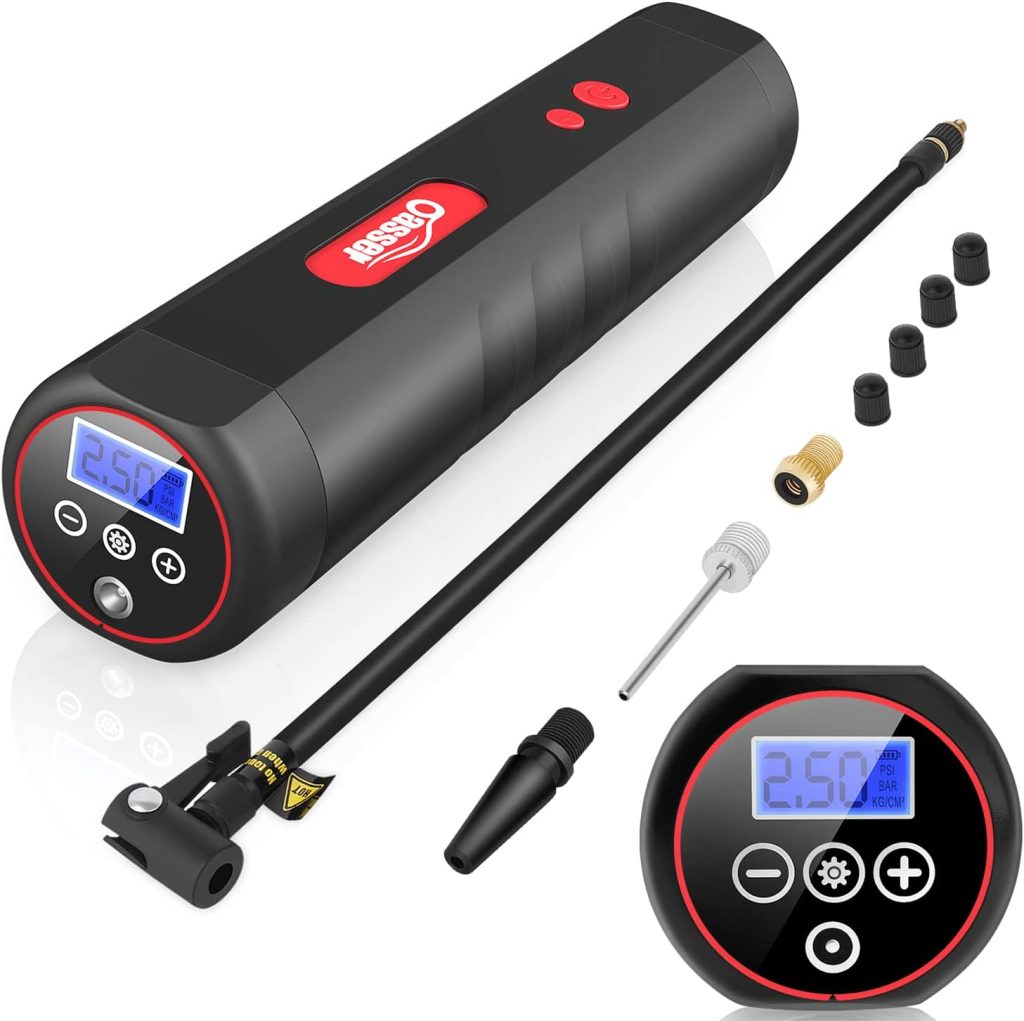
Top models include:
- Oasser Air Compressor Tire Inflator – Offers up to 150 PSI for cars, bikes, balls
- Oasser Portable Air Compressor Pump – Heavy-duty model for trucks and SUVs
- Oasser Cordless Tire Inflator – Rechargeable lithium battery for ultimate portability
Oasser inflators feature durable metal exteriors and accurate digital displays. Many models also come with built-in LED lights and emergency strobe lights.
JACO
JACO is a leading manufacturer of direct-drive tire inflators. Their inflators are designed for reliability and convenient use.
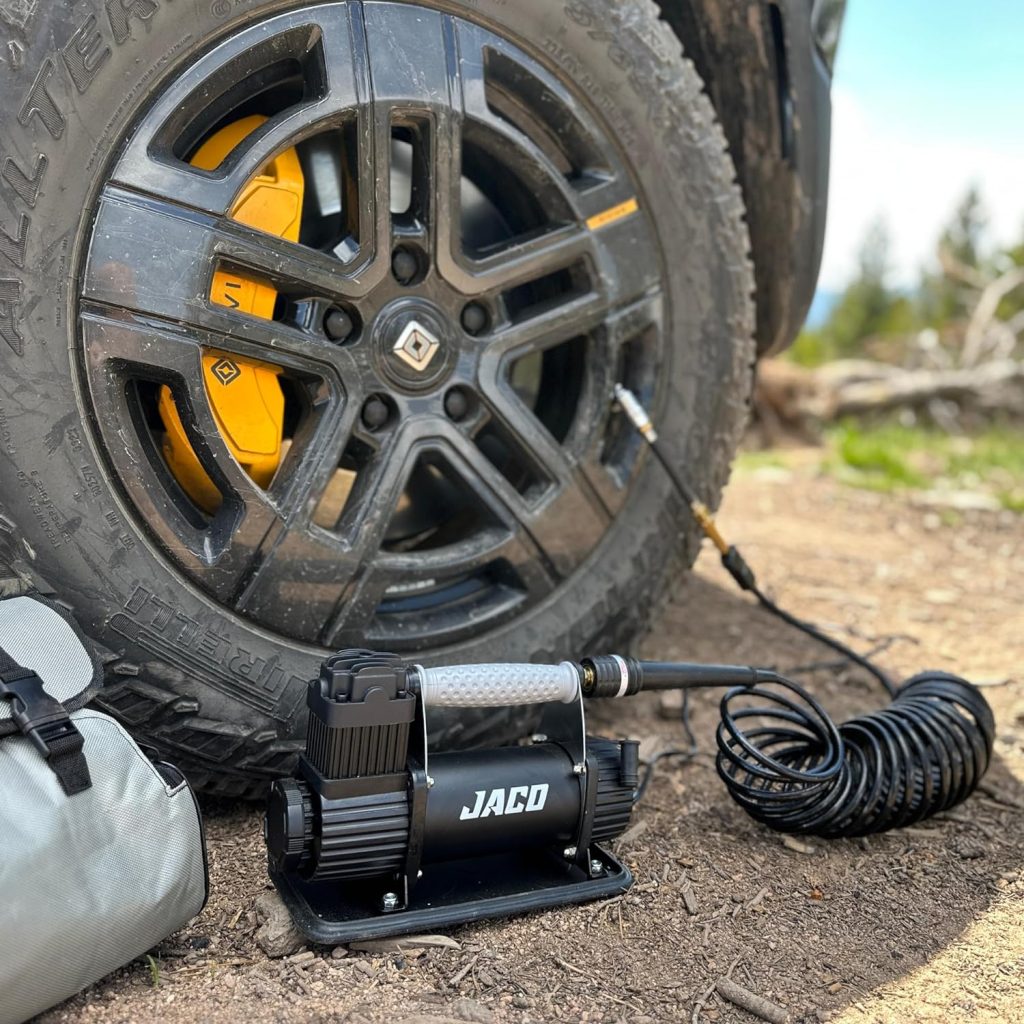
Notable JACO inflator models:
- JACO FlowPro Tire Inflator – Compact and lightweight for cars and motorcycles
- JACO Express Pro Heavy Duty Inflator – For trucks, RVs, and large tires
- JACO ZPRO Digital Tire Inflator – Midsize inflator with digital gauge
Key benefits of JACO inflators are the premium motors, easy-to-read displays, and solid construction. Many models also come bundled with additional nozzle adapters.
Cost Comparison
When considering an automatic tire inflator purchase, it’s important to think about both upfront costs and long-term costs over the life of the device. There are budget-friendly models available for under $50, but these tend to have lower build quality, fewer features, and a shorter lifespan. Investing in a premium automatic tire inflator for $100-300 will provide better durability, accuracy, and features.
Budget Models
- Upfront cost: $20-50
- Basic features: air pump to inflate tires
- May lack accessories and digital pressure gauges
- Lower maximum PSI
- Prone to faster wear and tear
Premium Models
- Upfront cost: $100-300
- Sturdy metal and rubber construction
- Digital pressure gauges and settings
- Higher max PSI (up to 150 PSI)
- Advanced features like auto shut-off
Over the long run, premium models can actually save money compared to constantly replacing cheap inflators that break. The upfront investment pays off through years of reliable performance. Premium models also maintain air pressure better and inflate faster due to higher powered air compressors. This improves fuel efficiency and prevents unnecessary tire wear.
Consider both short-term costs and long-term tire maintenance needs when choosing an automatic tire inflator. Paying more initially for quality and features can save money over time.
Safety Considerations
It’s important to keep safety in mind when using an automatic tire inflator. Here are some key points:
- Ensure proper installation according to the manufacturer’s instructions. Improper installation can lead to air leaks or the unit detaching at speed.
- Check tires thoroughly before inflation. Make sure there are no punctures, damage, or serious wear issues. Trying to inflate a damaged tire with an automatic inflator can cause it to burst.
- Do not exceed the maximum recommended PSI for your tires. Overinflation can cause tires to explode.
- Periodically check the inflator and connections for damage. Cracked or loose hoses can lead to air leaks.
- Avoid positioning the inflator near moving parts in your wheel well when installed. This can lead to hose damage.
- Make sure electrical connections are solid and insulated to prevent shorts.
- Use caution when removing the inflator chuck from the valve stem. Pressing at an angle can damage the stem.
By taking the proper precautions, automatic tire inflators can be operated safely. But it’s important to follow the manufacturer’s directions and inspect tires thoroughly before use. Taking these safety steps will provide reliable inflation and protect against tire damage or dangerous malfunctions.
Frequently Asked Questions
Automatic tire inflators are a convenient way to maintain proper tire pressure, but you may have some questions about how they work and whether they are right for your vehicle. Here are answers to some of the most common questions about automatic tire inflators:
How do automatic tire inflators work?
Automatic tire inflators work by using a small air compressor that is connected to your tire’s valve stem. They monitor tire pressure and add air when needed to maintain the pressure you set. Most run off the vehicle’s 12V power outlet.
Do I have to manually set the tire pressure I want?
Most automatic tire inflators allow you to manually set your desired tire pressure, usually via a digital display panel. Once set, the inflator will automatically maintain this pressure.
Where do I install an automatic tire inflator?
Automatic tire inflators are installed directly onto the valve stem of each tire. The inflator stretches across and fastens to the wheel using straps or zip ties to stay in place.
Are automatic tire inflators safe to use?
Yes, automatic tire inflators from reputable brands are generally safe to use as directed. Make sure to use the included hardware to securely fasten the inflator. Check that it does not rub on any suspension or steering components.
Will an automatic tire inflator over-inflate my tires?
Quality automatic tire inflators have auto shut-off capability once the set pressure is reached, preventing over-inflation. It’s also a good idea to periodically check the pressure against a tire gauge.
How accurate are automatic tire inflators?
Most automatic inflators on the market today can maintain pressure to within a couple PSI of your set point. Accuracy can decrease over time as components wear. Check calibration if the inflator is consistently off.
Do I need one for each tire, or can I move one between tires?
For full auto convenience, you need a dedicated automatic tire inflator for each tire you want to monitor. But you can move one inflator between tires as needed if you don’t mind manually reinstalling it.
Will an automatic tire inflator drain my car battery?
Automatic tire inflators draw very little current, similar to a LED light. Most will not noticeably drain a healthy car battery when installed correctly. But you may want to unplug it if parking for extended periods.

